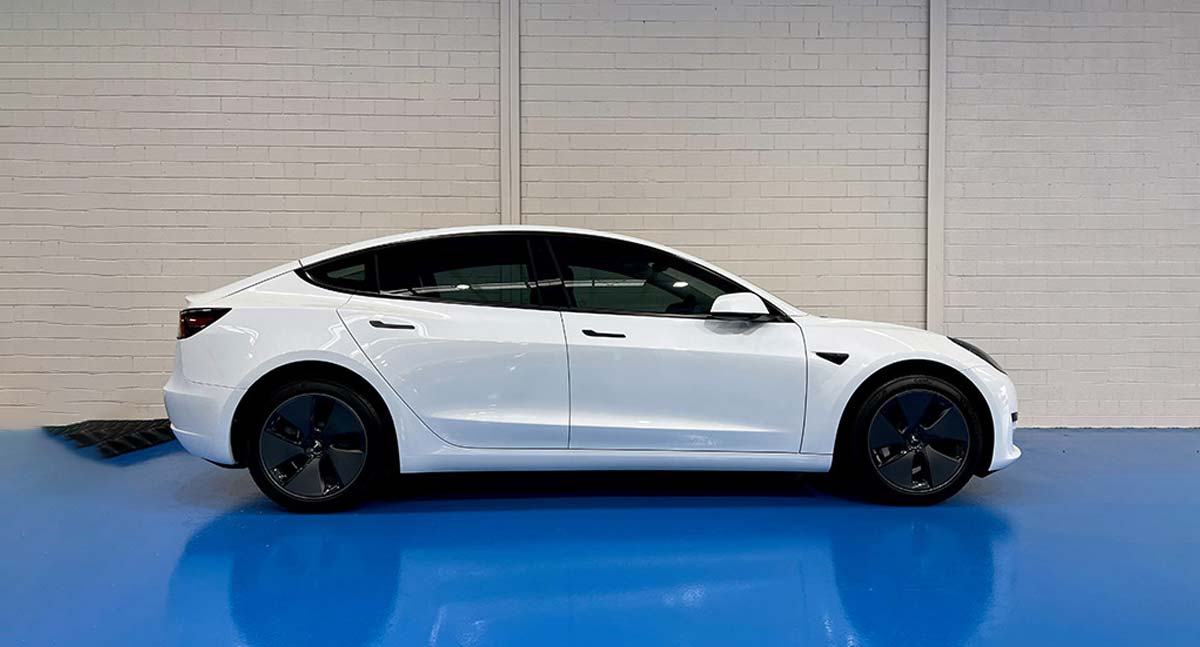
In this article, we delve into the key differences between ceramic tint and regular tint, and why you should consider each option for your vehicle. We will also discuss their respective benefits and drawbacks to help you make an informed decision.
Why Tint Your Vehicle Windows?
There are numerous reasons to tint your vehicle’s windows, such as enhancing its appearance, increasing privacy, and protecting your car’s interior. However, one of the most significant benefits is reducing heat and blocking harmful UV rays from the sun. This not only keeps your car cooler but also prevents damage to the upholstery and reduces the need for air conditioning.
Regular Tint: An Overview
Regular tint, also known as dyed tint, consists of polyester sheets dyed to different shades and colours. While regular tint can block some sunlight and offer a certain degree of privacy, its ability to reduce heat and UV rays is limited.
Advantages of Regular Tint:
- Affordable option
- Blocks some sunlight and heat
- Provides privacy
Disadvantages of Regular Tint:
- Limited UV and infrared light rejection
- Prone to fading, discolouration, and damage
- Frequent replacement necessary
Ceramic Tint: A Superior Option
Ceramic tint is a more advanced window film option, incorporating nano-ceramic particles that significantly improve heat reduction and UV protection. This high-performance tint is not only more effective at blocking heat but also does not interfere with GPS, radio, Wi-Fi, and other electronic signals.
Advantages of Ceramic Tint:
- Exceptional heat reduction (up to 85%)
- Blocks 99% of harmful UV rays
- Durable and scratch-resistant
- Non-metallic, preventing signal interference
- Provides security and protection
- Maintains clear visibility
Disadvantages of Ceramic Tint:
- More expensive than regular tint
Comparing Regular Tint and Ceramic Tint
To better understand the differences between regular and ceramic tints, you can visit a tint shop and conduct a heat lamp test. Place your hand on the other side of a tinted window, and you’ll notice a significant difference in heat transmission. Additionally, you can use a solar power meter to measure heat emission. Ceramic tint will typically have much lower readings, indicating superior heat reduction.
There are also various ways to tell if your tint is ceramic or standard, such as doing a visual clarity inspection or infrared performance test.
Making the Right Choice for Your Vehicle
Ultimately, the decision between regular and ceramic tint depends on your priorities and budget. If you want privacy without being concerned about heat reduction, UV protection, or signal interference, regular tint may be suitable. However, if you’re looking for a more advanced solution with better heat rejection, increased durability, and enhanced protection, ceramic tint is the clear winner.
Is ceramic tint better than regular tint?
Yes, ceramic tint is better than regular tint in several aspects. Ceramic tint offers superior heat reduction, blocks a higher percentage of harmful UV rays, is more durable, and does not interfere with electronic signals. While it may be more expensive than regular tint, the long-term benefits and performance of ceramic tint make it a worthwhile investment for those who prioritise heat rejection, UV protection, and overall quality.
Is ceramic tint easier to see out of at night?
Yes, ceramic tint is generally easier to see out of at night compared to regular tint. This is because ceramic tint is designed to maintain better visibility, even when it is providing heat reduction and UV protection. High-quality ceramic tints offer a clearer view while driving your car at night, ensuring better overall visibility and contributing to a safer driving experience.
In conclusion, ceramic tint offers numerous benefits over regular tint, making it a worthwhile investment for those who value heat reduction, UV protection, and durability. While the initial cost may be higher, the long-term advantages of ceramic tint make it an excellent choice for those seeking the best in window film technology.

